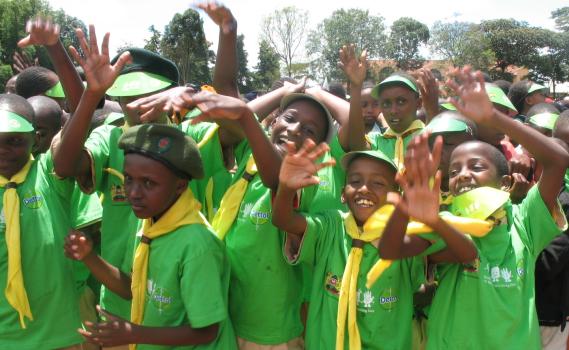Handwashing with Soap, Where Are We?
Global Handwashing Day (October 15) was established in 2008 as a platform to advocate for greater attention to hand hygiene. This effort, combined with many other efforts to bring attention to the need for improved water supply, sanitation, and hygiene, have resulted in the inclusion of handwashing as an indicator within the Sustainable Development Goals (6.2.1 Population with a basic handwashing facility with soap and water available on premise). With this, more countries than ever before have begun to include handwashing with soap as an indicator in their routine data collection. Two recent publications, the Joint Monitoring Programme’s (JMP) Progress on Drinking Water, Sanitation and Hygiene and the Handwashing in 51 Countries study provide us with the big picture of where we stand on handwashing with soap across regions and within countries.
Global Monitoring
The Progress on Drinking Water, Sanitation and Hygiene includes data from 70 countries representing 30 percent of the global population. As was done for water and sanitation, the JMP includes a handwashing ladder that includes criteria for “basic” facilities (household has handwashing facility with soap and water) and “limited” facilities (household has handwashing facilities but lacks water and/or soap). Analysis of global data revealed:
-
Coverage of basic handwashing facilities with soap and water varied from 15 percent in sub-Saharan Africa to 76 percent in western Asia and northern Africa, but data are currently insufficient to produce a global estimate.
-
In least developed countries, 27 percent of the population had access to “basic” handwashing facilities, 26 percent had access to “limited” facilities, while 47 percent had no facility at all.
-
In 2015, most countries in Africa had less than 50 percent coverage with basic handwashing facilities. Of those with handwashing facilities in sub-Saharan Africa, three out of five lived in urban areas.
Handwashing in 51 Countries
In the Handwashing in 51 Countries study researchers analyzed handwashing data from 51 Demographic and Health and Multiple Indicator Cluster surveys conducted between 2010–2013 to identify the proportion of households in which soap and water was available at a handwashing place in the home. The trends are similar to the JMP findings but provide a more granular view of handwashing behavior.
-
Even when households are observed, only 19 percent washed their hands after fecal contact (analysis of 51 country surveys combined with analysis of 42 studies from Hygiene and Health 2014).
-
Soap for handwashing is least likely to be found in households in the Africa region, however, handwashing places with soap and water were also infrequently observed in Southeast Asia, Western Pacific, and the Americas.
-
Even within countries, disparities can be significant. In Nepal, only 6 percent of poor or rural households had soap compared to 85 percent in wealthier or urban areas.
-
Low cost hand cleansing agents such as ash were rarely found in households in the 51 countries.
-
Although we now have much more data on handwashing, national surveys can only provide us with household-level data but cannot tell us about individual behavior, when the practice is occurring, or identify factors that affect access to soap within households.
The analysis concludes that handwashing behavior could be improved by:
-
Promoting access to handwashing materials
-
Placing handwashing materials at more convenient locations in dwellings. This is especially important in poorer, rural areas where children are more vulnerable to diseases such as pneumonia and diarrhea.
A recent issue of USAID’s Water Currents features many more studies on the topic of handwashing.
Nga Kim Nguyen is the senior WASH and social behavior change advisor for USAID and brings nearly 20 years of field experience in formative research, strategy design, and capacity building in SBC for WASH and other health behaviors. Nga recently participated in a webinar with the Global Handwashing Partnership Norms, Nudges, or Addiction? Understanding Drivers for Handwashing Behavior Change.
Dan Campbell, Water CKM knowledge creation/WASH specialist, compiles the biweekly newsletter Water Currents, which highlights current research and news related to the water and sanitation sector. Recent issues have covered rural water supply, water safety plans, and WASH and finance. Contact Dan, if you would like to collaborate on a topic for a future issue.


